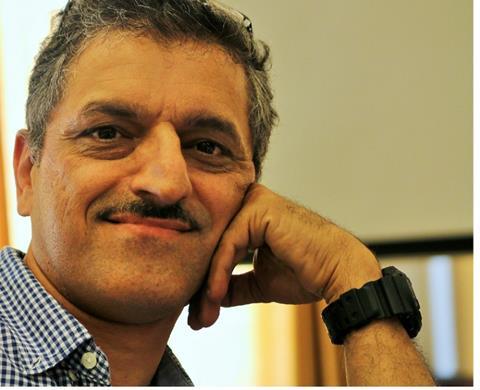Sanjay Duda, CEO of Planetcast, looks at how the industry can face increasingly complex workflows

The media and entertainment industry is on the cusp of a pivotal transformation as we enter 2025. While innovation across broadcasting, streaming, and content production continues to unlock unprecedented opportunities, it has also given rise to a pressing issue: the ‘complexity challenge’. This overarching trend – defined by increasingly intricate workflows, fragmented tools, and multi-channel demands – will dominate industry discourse as companies strive to streamline operations and retain competitive agility.
Simultaneously, the rapid advancements in cloud technology and AI will emerge as crucial tools for addressing this complexity, enabling scalable solutions, automation, and unified workflows. For broadcasters, studios, and streaming providers, tackling this challenge will determine who leads the way in the next wave of innovation.
The rising complexity of media operations
The proliferation of media formats, devices, and distribution channels has introduced layers of complexity to production and delivery workflows. In 2025 content owners and rightsholders will more than ever tasked with managing:
- Increasingly fragmented distribution platforms, from traditional broadcasting channels to different over-the-top (OTT) distribution points, including Free Ad-Supported Streaming TV (FAST).
- Rising localisation demands, including multilingual subtitling, dubbing, and metadata enrichment.
- Expanding audience preferences for on-demand, live, and personalised content across devices.
These factors have disrupted legacy workflows, pushing companies to reimagine their operations for flexibility and speed. Inefficient, multi-vendor solutions often exacerbate this complexity, slowing down innovation and driving up costs.
To maintain agility in this dynamic ecosystem, more unified systems are becoming essential. A singular approach – integrating production, media management, and delivery – can simplify operations and provide a competitive edge.
Cloud technology: a unified framework for agility
The transition to IP workflows will continue to build momentum across the industry in the coming year, especially the shift to cloud-based services and technologies as organisations seek agile solutions to manage growing complexity. Cloud-first infrastructure enables improved integration across production, processing, contribution, playout and distribution.
For broadcasters and streaming providers, this approach offers several crucial advantages, including:
- Scalability: cloud-based workflows allow media companies to scale operations rapidly as they expand into new markets, take on programming, and meet the demands of growing audiences.
- Efficiency and agility: shifting from capital expenditure (CapEx) to operational expenditure (OpEx) models reduces overhead and provides flexibility, allowing the easy creation of pop-up channels and OTT services.
- Unified workflows: cloud platforms foster integrated architecture, enabling streamlined processing, localisation, and monetisation.
In addition, hybrid cloud solutions will gain ground as media companies strike a balance between the flexibility of the cloud and the security of on-premise infrastructure. For live events and sports broadcasting, IP workflows supported by cloud tools help organisations deliver more low latency coverage to fans worldwide.
AI: streamlining and enhancing video workflows
As the complexity challenge intensifies, artificial intelligence will play a critical role in automating workflows and enhancing efficiency across live, linear, and on-demand channels. In 2025, AI will move beyond experimentation, becoming a practical tool for video production, localisation, and monetisation.
AI-powered tools will automate time-consuming tasks like real-time highlight creation for live sports, enabling broadcasters to deliver engaging content faster to global audiences. AI-created subtitling and dubbing will simplify the delivery of content across diverse linguistic and cultural markets. AI will also enhance content discoverability through advanced metadata tagging, making assets easier to search, manage, and personalise for audiences.
Overall, AI’s integration into unified IP workflows will empower broadcasters and studios to do more with less, reducing complexity while delivering richer viewer experiences.
The path forward: conquering complexity through innovation
To address the complexity challenge in 2025, media organisations must embrace unified, cloud-first platforms that integrate their entire content lifecycle – from production, processing and localisation to delivery, distribution and monetisation. This streamlined approach will enable frictionless workflows, faster time-to-market, and the agility to innovate.
The proliferation of OTT and FAST channels will continue to redefine content delivery and monetisation. However, managing distribution across OTT and FAST platforms requires tools that can handle multiple content versions, formats, and resolutions; ad-tech integration for targeted advertising; and seamless localisation for diverse audiences.
In 2025, the companies that succeed will be those that adopt IP and cloud-based solutions that provide better flexibility and scalability than ever while integrating AI-driven automation to reduce costs and enhance efficiency.
By overcoming the fragmentation plaguing media operations, broadcasters, studios, and streaming services will unlock new opportunities for growth, efficiency, and audience engagement.
The complexity challenge is a defining hurdle for M&E in 2025. As operations grow increasingly intricate, unified cloud-first solutions and AI-driven automation will be vital, helping organisations streamline and maintain agility. By addressing this challenge head-on, media companies can focus on what matters most: delivering high-quality, engaging content while staying ahead of market demands.

Sanjay Duda is CEO of Planetcast







No comments yet